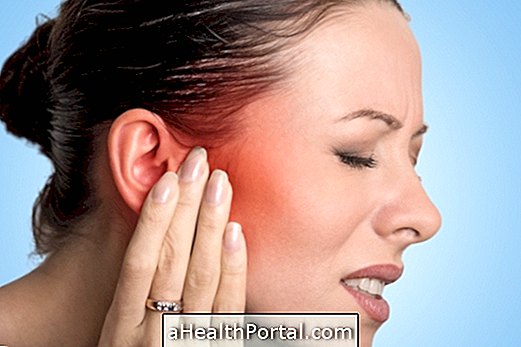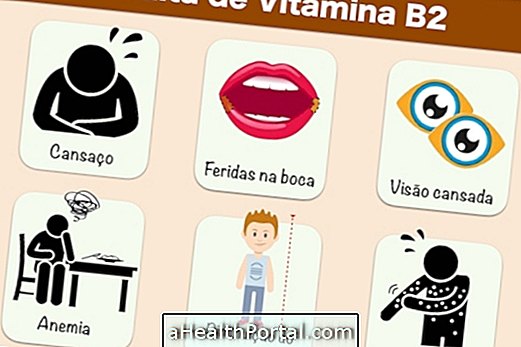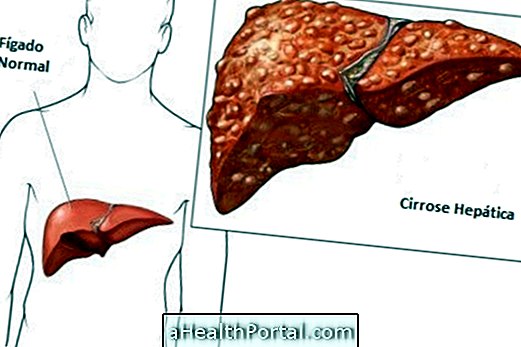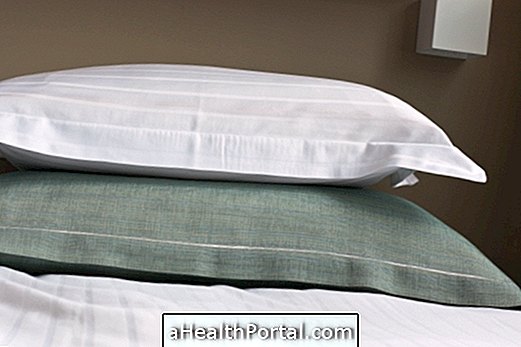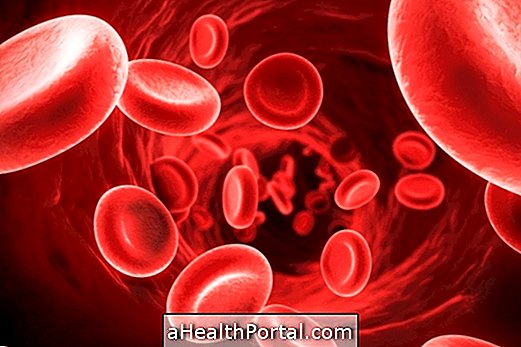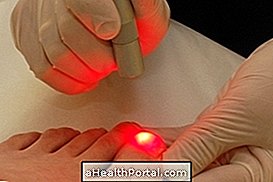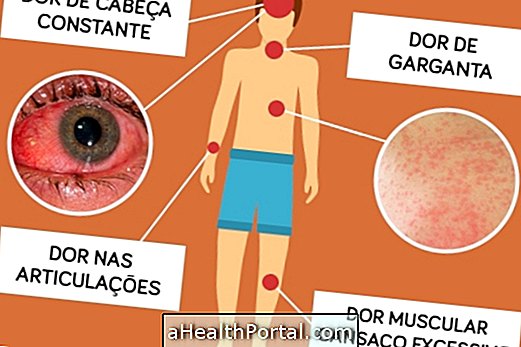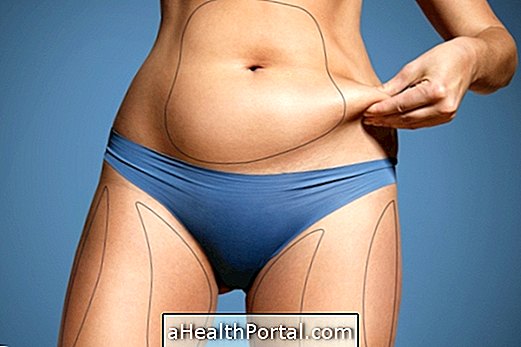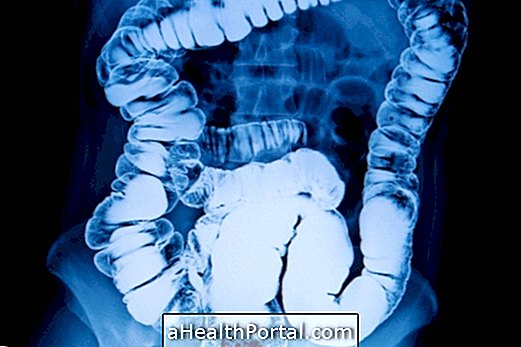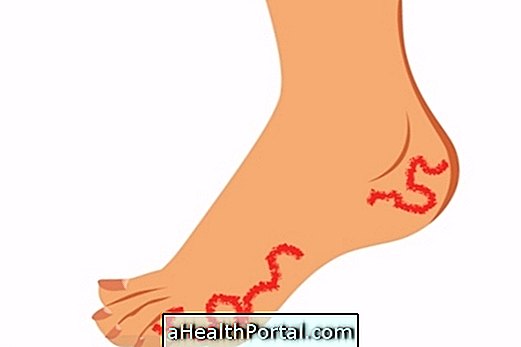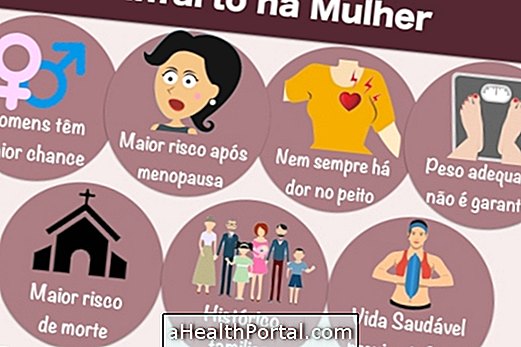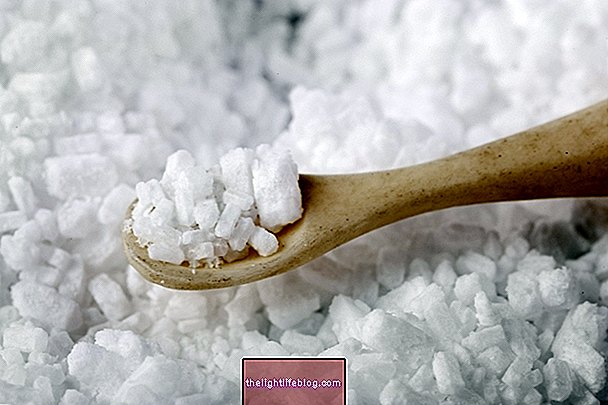Cold sweat is a reaction of the body that usually occurs to protect you from dangerous situations or in cases where there is oxygen deprivation, being very common in situations such as hypoglycemia, hypotension, anxiety, hypoxia, generalized infection and shock.
Thus, whenever this symptom is recurrent it is necessary to consult a general practitioner to assess if there is any problem that may be at its origin, initiating the most appropriate treatment. Some of the most common causes include:
1. Hypoglycemia
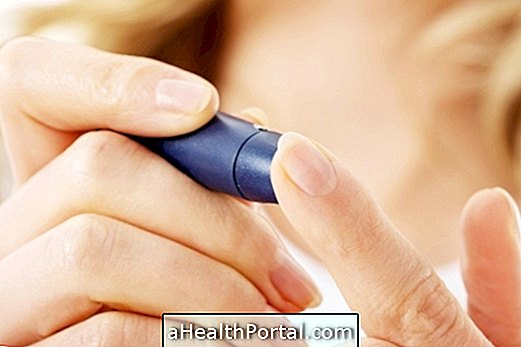
Hypoglycaemia usually occurs when blood sugar levels drop below 70 mg / dl, causing symptoms such as cold sweats, headache, fainting, blurred vision, confusion, weakness, malaise, nausea or drowsiness. See more symptoms that may occur during hypoglycemia.
To know what blood glucose values can be made a quick test with the handheld device that is normally used by diabetics.
What to do: At first symptoms of hypoglycemia, one should sit down as soon as possible and eat foods rich in sugar or easily digested carbohydrates, such as a fruit juice, a bullet or a cake. If the symptoms persist, or if the person passes out, a little sugar should be put under the tongue and the first aid should be sought for medical help.
2. Hypotension

When hypotension occurs, more commonly known as low blood pressure, there may be a decrease in oxygen reaching the brain and organs, not only causing cold sweats, but also dizziness, palpitations, weakness, blurred vision, malaise, pallor or fainting .
What to do: During a hypotension crisis, the person should try to raise their legs so that they stand above the torso and drink fluids. Learn what you can do to avoid having low blood pressure.
3. Stress and anxiety

In situations of stress and anxiety the organism reacts producing cold perspirations mainly in the forehead, hands, feet and armpits. In addition to these symptoms, the person suffering from anxiety may also experience muscle tension, malaise, nausea, craving for vomiting, palpitations and tremors. See other symptoms you may have in anxiety situations.
What to do: There are a few ways that can help in controlling anxiety such as getting a relaxing massage or taking a warm bath, taking natural remedies like chamomile tea or passion fruit juice. In more severe cases where it is difficult to control anxiety, psychological counseling or even medication that may be prescribed by the doctor may be necessary.
4. Decreased oxygen

In cases of hypoxia, which is a decrease in the supply of oxygen to body tissues, symptoms such as cold sweats, shortness of breath, weakness, mental confusion, dizziness and in more severe cases fainting and coma can lead to death, this should go to the emergency room urgently as soon as the first symptoms occur.
Decreased oxygen can occur in situations where blood circulation is poor, in cases of intoxication, when in places with altitudes above 3000 meters, in people with lung disease or anemia.
What to do: Treatment involves the use of an oxygen mask to normalize blood levels and resolve the cause of hypoxia with specific treatments such as nebulization for asthma, medicines to improve the function of the lungs or heart, treatments for anemia or antidotes for the poisoning, for example. In severe cases, the use of artificial respiration may be necessary.
5. Generalized infection

Generalized infection or sepsis is a bacterial, viral or fungal infection that affects several organs of the body, leading to its failure and making it more difficult to oxygenate. It can cause cold sweats, high fever, tremors, pressure drop or tachycardia.
What to do: The treatment for generalized infection consists of taking antibiotics, analgesics and anti-inflammatories and in the replacement of fluids. However, these measures may not be sufficient, and artificial respiration may be necessary in an intensive care unit.
6. Shock

During a state of shock, which can occur due to a major trauma, stroke, allergic reaction or an accident, an oxygen fall may occur, preventing the organs from receiving the sufficient amount they need to function, causing symptoms such as cold sweats, pallor, increased pulse rate, nausea and vomiting, weakness, dizziness or anxiety.
What to do: The person who enters into shock may or may not be aware, but in all cases it is advisable to go to an emergency room.
